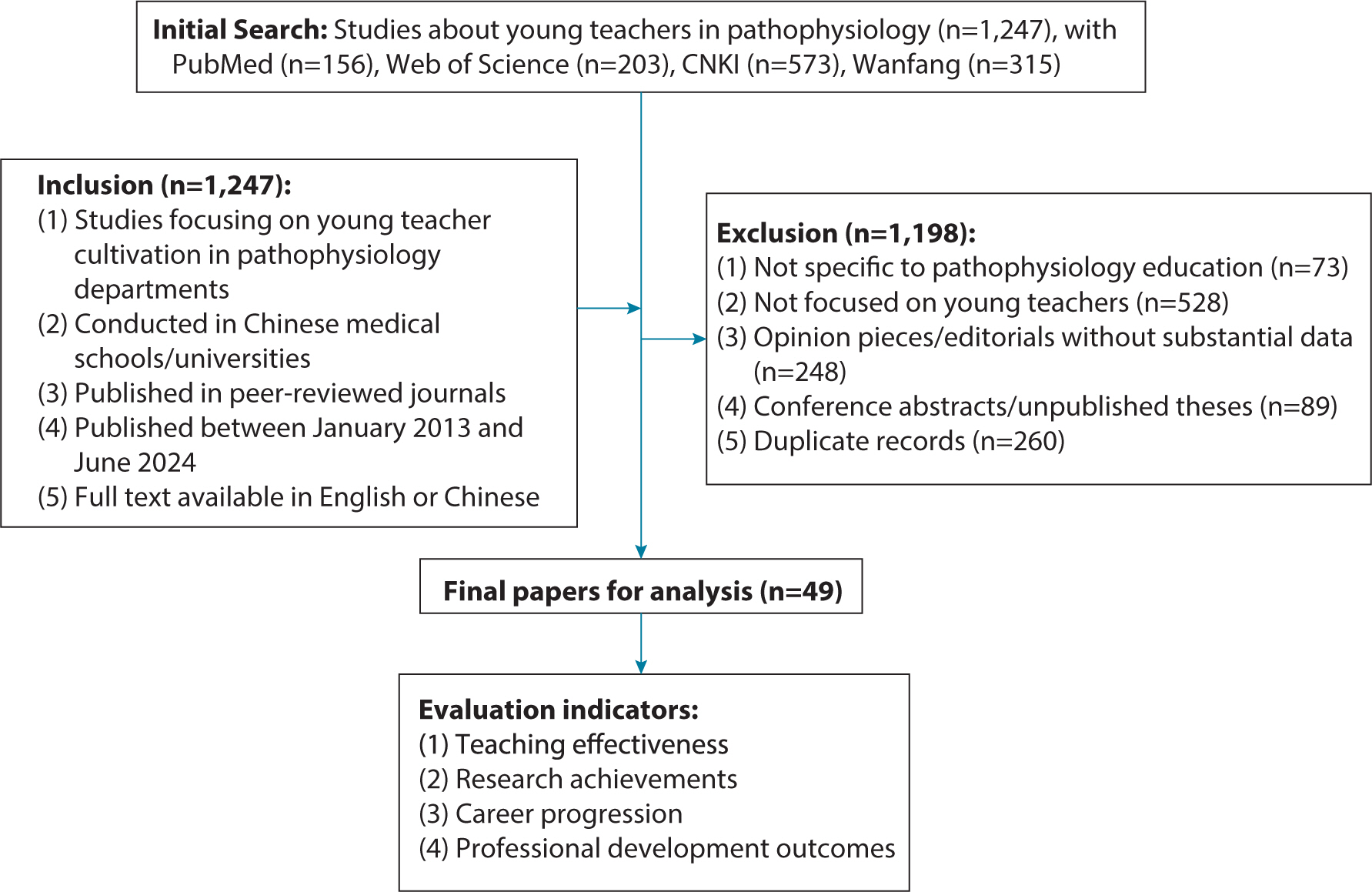
This narrative review examines the challenges, strategies, and future directions in the development of young teachers within the pathophysiology departments of Chinese medical colleges. A thorough review of 49 studies published between 2013 and 2024 was carried out using PubMed, Web of Science, and various Chinese databases. The primary challenges identified include teaching innovation (cited in 84.2% of the studies), research pressure (91.2%), disciplinary characteristics (87.7%), and career development (80.7%). Medical schools have responded by enhancing training systems (94.7%), innovating teaching methods (93.0%), and bolstering research support (96.5%). Looking ahead, trends are shifting toward the application of new technologies, interdisciplinary integration, and international collaboration. The focus on cultivating young teachers is increasingly geared towards personalization and diversification, which are essential for advancing education in pathophysiology. High-quality young teachers are pivotal in raising teaching standards, fostering research innovation, and facilitating interdisciplinary exchanges. Based on these insights, we recommend several practical measures to enhance the quality of pathophysiology education in China. These include establishing comprehensive training programs that integrate teaching innovation and research skills; developing structured mentorship systems with clear pathways for career advancement; creating platforms that support technology-enhanced teaching and international collaboration; and implementing systematic evaluation mechanisms to assess teaching effectiveness. These targeted interventions will require a coordinated effort from department heads, educational institutions, and policymakers to ensure a sustained improvement in the quality of pathophysiology education.

Metabolic syndrome (MetS) is a cluster of metabolic abnormalities that include hypertension, altered glucose metabolism, dyslipidemia, and abdominal obesity and is strongly associated with an increased risk for diabetes and cardiovascular disease onset in obese adults and children. A progressively greater number of children and adolescents are being affected by this syndrome due to the constant increase in the prevalence of obesity. Like obesity, childhood MetS highly tracks to adulthood. The pathogenesis of MetS includes the interaction between obesity, insulin resistance, and inflammation. Early diagnosis and intervention are important in order to conduct lifestyle modification. In this article, we review the definition and pathophysiology of MetS, the importance of screening, and prevention and treatment options for MetS in childhood.
Citations

 , Yoon Jin Cha
, Yoon Jin Cha , Young Eun Kwon
, Young Eun Kwon , Yung Ly Kim
, Yung Ly Kim , Kyoung Sook Park
, Kyoung Sook Park , Seong Yeong An
, Seong Yeong An , Beom Jin Lim
, Beom Jin Lim , Hyeon Joo Jeong
, Hyeon Joo Jeong , Hyung Jung Oh
, Hyung Jung Oh , Tae-Hyun Yoo
, Tae-Hyun Yoo , Shin-Wook Kang
, Shin-Wook Kang , Kyu Hun Choi
, Kyu Hun Choi , Seung Hyeok Han
, Seung Hyeok Han
Nephrotic syndrome is most commonly observed in membranous lupus nephritis in patients with systemic lupus erythematosus (SLE). However, other forms of idiopathic nephrotic syndrome rarely occur in these patients. Here, we report a case of SLE complicated by minimal change disease (MCD). A 24-year-old woman with SLE visited our hospital for generalized edema and heavy proteinuria. Laboratory tests did not support immunological exacerbation of lupus, while renal biopsy revealed diffusely effaced foot processes without electron-dense deposits that were consistent with MCD. Administration of high-dose corticosteroids and 6 subsequent cycles of monthly intravenous cyclophosphamide resulted in complete remission. Although nephrotic-range proteinuria recurred 1 month after switching to maintenance therapy with mycophenolate mofetil, complete remission was reestablished after a 6-month treatment with corticosteroids and cyclosporine. Physicians should be cautious in assessment and management of such a rare renal manifestation.
Citations


